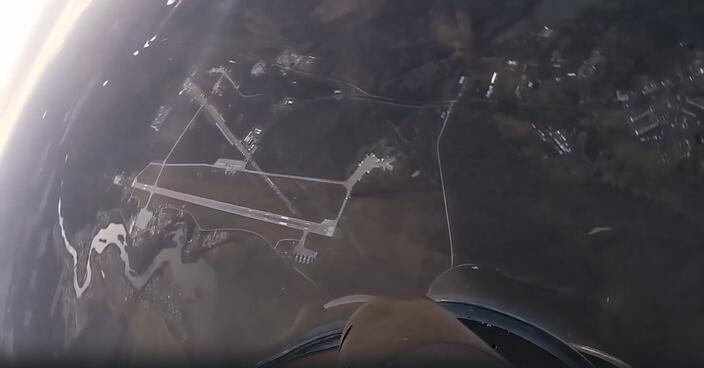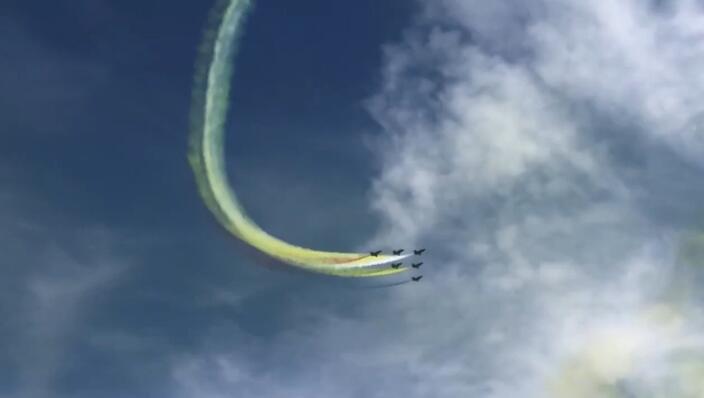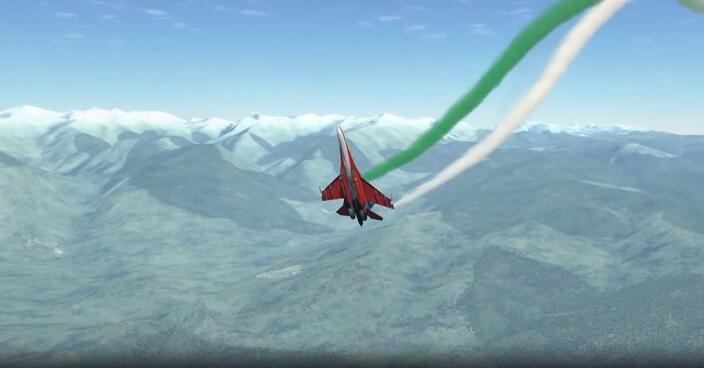Photo: © Izvestia/Dmitry Korotaev
Soon after the advent of airplanes, pilots began to think about what would happen if they made the most outlandish somersaults on the way from point A to point B. At the beginning of the 20th century, desperate aeronauts began to practice aerobatics, many of which are known today. And often the appearance of unusual elements is strongly associated with the names of domestic pilots. Some of them were told by the experts of the program “Secrets of Chapman” and its presenter Anna Chapman on REN TV.
Classic “corkscrew”
“Corkscrew” is one of the most famous aerobatic figures. To perform this maneuver, the pilot decelerates abruptly and takes the aircraft into a steep dive. It is said that the British aviator Wilfred Park was the first to perform it in 1912. True, he did it by accident.
However, four years later, military pilot Konstantin Artseulov deliberately went into a tailspin. The grandson of the famous artist Ivan Aivazovsky went into a tailspin twice in a row at an altitude of 2000 meters and successfully completed the flight on the Nieuport-XXI airplane.
“The figure is quite complicated, but it can not be performed on all even modern aircraft. Because sometimes aircraft, especially combat aircraft, for civilian purposes, if they enter, they are put into a tailspin, this is such a figure when the coup goes in a spiral, a decrease, that’s enough unpleasant overloads are coming, “- said the honored military pilot, Major General Vladimir Popov.

According to him, when performing aerobatic maneuvers and when falling into a tailspin, one must strictly “maintain the regimes”.
“Loop”
There is a figure on the list with a Russian surname – Nesterov’s dead loop, named after an outstanding pilot.
For many years, the dead loop existed only on paper. The pilots were simply afraid to fall out of the cockpit during its execution. However, in 1913, Pyotr Nesterov performed this figure for the first time, not even fastened to the aircraft seat. The pilot did not risk his life for beauty or bravado.
“A dead loop – when the plane literally performs such a figure in a vertical plane, even a vicious circle. And it is not for nothing that the name of Pyotr Nesterov was given to such a figure. He was the first to perform it. And we must understand that this happened almost a hundred years ago when the planes were like us we say, whatnots “- Popov added.

According to him, the execution of the dead loop made a splash in many countries of the world – for the first time people learned that the aircraft is capable of performing such figures. And Nesterov’s loop can come in handy in real combat conditions – for example, to avoid the enemy.
“Cobra Pugachev”
Another element with a Russian surname is the Pugacheva Cobra, which the whole world saw during the Le Bourget air show in 1989. Then it was possible to perform aerobatics on the Su-27.
When performing a figure, the nose of the aircraft lifts up for a while, the ship slows down and sharply reduces speed, then returning to its original position. This trick was not invented for beauty. He has a combat mission. The maneuver is suitable for avoiding pursuit.

“When the same Pugachev cobra is executed, the plane “stops”, it seems to disappear for one, half a second, one and a half seconds from the radar of the enemy aircraft. And during this time it becomes possible to maneuver and go into the tail of the attacking aircraft and shoot it down”, – explains military historian Yuri Knutov.
At the same time, it is almost impossible to perform the figure on European or American aircraft. The secret is in the stability and adaptation of Russian aircraft, which performed the “cobra” without losing spatial orientation.
“Frolov’s Chakra”
At the same Paris air show, but in 1995, the “Frolov chakra” was shown – an aerobatics figure in which the ship actually makes an air somersault. The element got its name in honor of test pilot Evgeny Frolov.

“He practically falls on his back, like some kind of somersault. I had to perform this aerobatics maneuver on gliders, yes, of course, under other conditions of velocity pressure and so on. But this is such a magnificent figure that you don’t understand how it works “– says Vladimir Popov.
To repeat such a figure, it is best to keep on hand a Russian fighter of the fourth or fifth generation, which are capable of performing such somersaults thanks to the engine.
“Kvochura Bell”
We must not forget about the “Bell”. This aerobatics is so named because of the trajectory of movement that resembles its shape. The plane takes off almost vertically and at maximum speed, then abruptly extinguishes it, turning off the engines, freezes and rushes to the ground at full speed.
“The famous, rather complicated element, which is really seventy to eighty degrees of pitch, the plane rises intensively and begins to descend, as we say, “runs forward with its tail”, then either releases the nose and falls forward, exits, or it is done by descending back smoothly , such a hill, “- adds Popov.

Sometimes the figure is called the “Kvochura Bell”. In 1988, at the air show in British Farnborough, Anatoly Kvochur was the first in the world to demonstrate a maneuver on a fourth-generation MiG-29 jet fighter.
“There is a maximum speed for an aircraft, and there is a minimum, which is limited by just a very small velocity pressure. And at this low velocity pressure, controllability deteriorates, the energy deteriorates, that is, the power-to-weight ratio is more correct to say. Because a large angle of attack is required, the so-called when the aircraft flies to maintain lift, says Kvochur himself.
The benefit of the “Bell” in air combat is difficult to overestimate. The figure allows the aircraft to hover in place and thereby deceive radars and radar-guided missiles.
For more about the amazing phenomena of our world, the secrets of society and history, see the Chapman Secrets program on REN TV.
Source: Ren
Ray Bly is an accomplished journalist in the field of Automobile. He currently works as a writer at 24 news breaker. With a deep understanding of the Automotive industry and a talent for uncovering the latest developments, Ray’s writing provides readers with insightful and informative coverage of the latest news and trends in the field.
